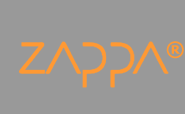Consequences for psychomotoric practice
»How can one keep ( or find again) the urge for movement and action and at the same time enable access to creativity and strong symbolic play behaviour ( like plastic, verbal and mathematical ways of expression) ?
Answering this question is or at least, should be, the aim of any education.« ( Symbolik der Bewegung, 1998, p.47)
The purpose of psychomotoric practice is consequently to give the child the possibility to repeat these play behaviours again and again in an environment which enables the free expression of her history and »her symbolism«. Thus »the psychogenetic development is regularly reproduced« ( Symbolic der Bewegung, 1998, p.26). The psychomotoric practice wants to support the child in her psychological development, by offering a route from body, action and playing to language and thought.
The psychomotoric space is therefore divided into two areas: an area of motoric expression and an area of representation. In the area of motoric expression there is kinds of equipment and material for spinning, swinging, climbing,etc.. Soft play material like foam cubes, balls etc. in different sizes, forms and colours are the main resources in this area. Sensomotoric and symbolic play can be experienced in there.The child can experience her body and relive her fantasies.
The area of representation, on the other hand, deals with abstract aspects: here the child can build, mould, knead and draw pictures. The psychomotoric therapist talks to the child about what she is creating in this area.
Nowadays an important principle is to not just remain on a tonic-emotional level with the child. In order for the child to learn how to unravel her fantasies and to integrate her emotions into mental schemas, it is necessary to move from body movement to language.
»We want the child to actively involve herself through language. She should make use of linguistic skills to make herself understood. By talking about the experiences shared with the other children, she is learning to manage and develop her language skills, meeting the needs for communication and interaction ( Aucouturier/Lapierre,1998, p115).«
Children's, speech used for communication and exchange of ideas, has been extended to the function of keeping distance and the possibility of decentralisation.
